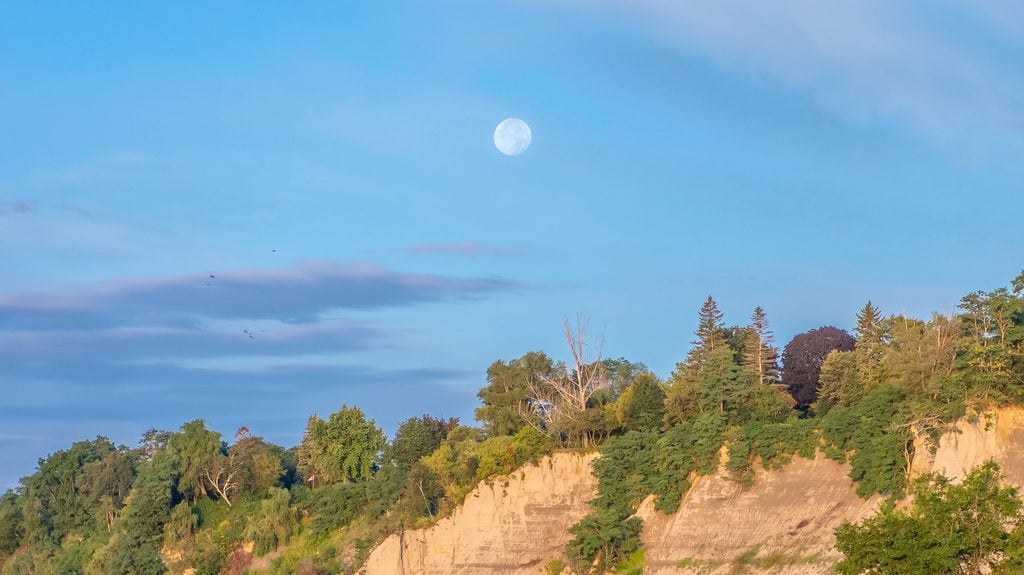Here’s Why You Can Sometimes See the Moon During the Day
Updated: Nov. 27, 2022

Is being the brightest object in the night sky not enough for it?!
It’s probably some of the earliest astronomy you learn. The sun is the big yellow-white ball in the sky during the day, while the moon is the shape-changing one that glows at night. And that’s true….except when it’s not. Sometimes, smack in the middle of the afternoon, you can clearly see the moon, usually a crescent or half, floating there in the sky, encroaching on the sun’s domain. What’s going on? You can’t see any of the stars during the day; what’s the moon doing there? The answer is just one of our favorite fun (and sometimes spooky!) facts about the moon.
It has to do with the moon’s position in the sky. As the moon revolves around the Earth, the Earth also revolves around the sun. These revolutions cause the perceived “movements” of the moon and sun that we see in the sky. And because of them, the moon is only directly in line with the sun once every lunar month—that’s how we get the full moon. This means that the moon rises exactly as the sun sets, and vice versa. The rest of the month (which is approximately 29.5 days in total), they’re not precisely lined up like that, meaning that the moon can be out before the sun sets or after it rises, depending on whether it’s before or after the full moon.
The best time to see a daytime moon is when the moon is at a 90-degree angle with the sun—when the moon is in its first or last quarter phase. During the new moon, when you can’t see the moon at night because its bright side is facing away from Earth, the moon is still “out” during the day, but it’s too close to the sun—the sun’s brightness completely hides it. Sorry, little guy. Luckily, it always reappears.
And there’s another factor allowing the moon to be visible in daylight: how bright the moon appears. Of course, the moon doesn’t give off any light on its own; it’s reflecting the light from the sun. And to us Earthlings, that light appears brighter than the scattered blue light of the surrounding sky. And the notion that you can’t see the stars during the day? As Space.com points out, you actually can, if you look hard enough. The moon is way, way, way closer to Earth than any of those stars (and other planets), which is why it appears so much brighter. But you could get a faint glimpse of other celestial bodies, like Venus, Jupiter, and especially bright stars, during the day through a strong telescope. So, no, daytime isn’t only the sun’s domain!
We can explain this lunar phenomenon, but there are plenty of unsolved mysteries scientists still have about the moon.
